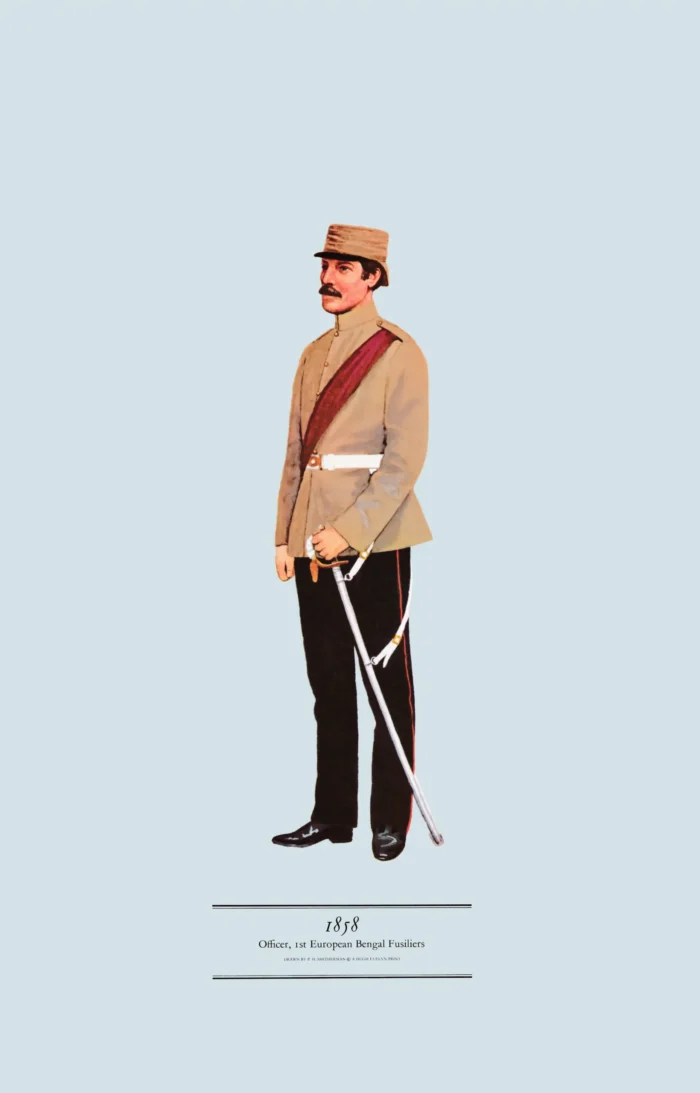Officer, 1st European Bengal Fusiliers, 1858 (Munster Fusiliers)
£12.50
Raised 1752; from 1881 the Royal Munster Fusiliers; disbanded 1922 following Irish independence (scroll down for a more detailed Description)
Published 1970 by © Hugh Evelyn Limited; drawn by Colonel Philip Henry Smitherman (1910-1982), Royal Corps of Signals
Size: c. 24.5 x 37.5 cm [9 ½ ″ x 14 ½ ″] (may vary slightly from printers’ cut 50 years ago)
Printed on on medium cardstock weighing 144 g/sm2 faced in light greyish blue (RGB c. d4e1e8)
Print is STANDARD size – shipping is the same for 1 to 10 prints (based on largest print size in your order) – see Shipping & Returns.
Published 1970 © Hugh Evelyn Limited; artist Colonel P.H. Smitherman (1910-1982);
c. 24 x 37 cm (9″ x 14″) medium cardstock 144 g/sm² in light greyish blue Hex: d4e1e8;
Shown here is a scan of the print.
This is a STANDARD sized print; see mail costs at Shipping & Returns.
More detail below
In stock
Description

Disbanded 1922. The regiment was raised by the Honourable East India Company as a Guard of Honour in 1652. After the Mutiny the 1st European Bengal Fusiliers were transferred to the British Army as the 101st Royal Bengal Fusiliers, and they later became the 1st Battalion the Royal Munster Fusiliers, being finally disbanded in 1922 on Ireland gaining independence from Britain.
The khaki, or dust-coloured uniform familiar today to everyone originated in India, the name khaki being derived from the Persian word for dust. It was worn as a service dress by some regiments of the Indian Army before the Mutiny and was accepted by two regiments of the British Army, the 52nd and the 61st, during the fighting to suppress the Mutiny. They obtained their khaki clothing by dying the white drill clothes issued for use in the hot weather, and there are many stories of the materials which they used as dye – mud, gunpowder, office inks, and so on. Possibly none of which was really used at all. Nevertheless, it does seem clear that the initiative for the introduction of this new colour came from the regiments themselves. We do not know exactly what the first British khaki uniform looked like. This plate, of an officer of the 1st European Bengal Fusiliers, is based on a photograph taken at Lucknow in 1856, during the Mutiny, and must show something like the clothing worn by those two enterprising British battalions.
Additional information
| Weight | 0.0131 kg |
|---|---|
| Dimensions | 23 × 37 cm |





